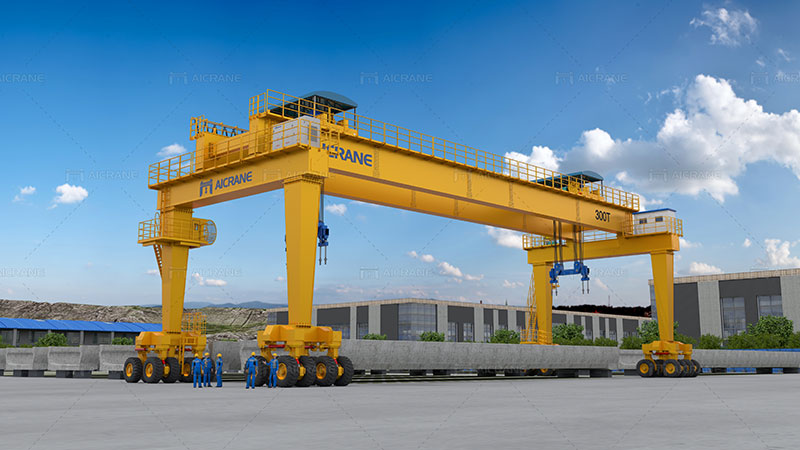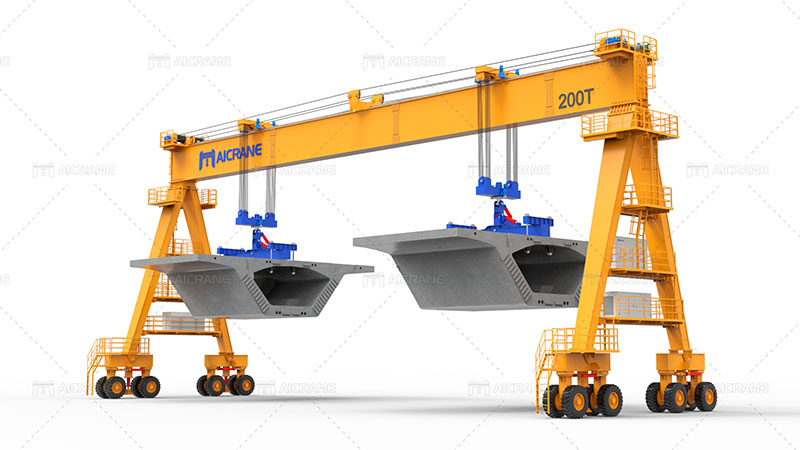Straddle carriers are an integral part of modern logistics and container handling operations, offering versatility, efficiency, and cost-effectiveness. When considering the purchase of straddle carriers, one of the primary concerns is understanding straddle carrier prices. In this comprehensive article, we will delve into the key factors that influence straddle carrier prices, helping you make informed decisions in your procurement process.
What is a Straddle Carrier?
Before we delve into pricing considerations, let’s briefly understand what a straddle carrier is. A straddle carrier is a specialized vehicle designed for the transportation and stacking of containers and other heavy loads. It is characterized by its distinctive “straddling” legs that can lift and carry containers above the ground. Straddle lift cranes are commonly used in container terminals, ports, and intermodal yards due to their ability to handle a wide range of cargo types, including oversized and heavy containers.

Factors Influencing Straddle Carrier Prices
Type and Size:
The type and size of the straddle carrier are fundamental price determinants. Straddle carriers come in various configurations, including single-lift, twin-lift, and gantry-type straddle carriers.
Larger straddle carriers capable of handling heavier and larger containers are generally more expensive than smaller counterparts.
Lifting Capacity:
Lifting capacity is a crucial factor in determining the price of a straddle carrier. The higher the lifting capacity, the more costly the straddle carrier is likely to be.
Straddle carriers are designed to handle a specific weight range, so selecting one with the appropriate lifting capacity for your needs is essential.
Customization:
Customization options can significantly impact the price of a straddle carrier. Tailoring the carrier to meet specific operational requirements can increase its cost.
Customization may include features like extended spreader arms, specialized attachments for handling different cargo types, or unique safety systems.
Technology and Features:
The inclusion of advanced technology and features can drive up the price of a straddle carrier. Modern straddle carriers often come equipped with GPS systems, remote monitoring capabilities, and advanced safety features.
These technologies enhance operational efficiency and safety but may add to the overall cost.
Brand and Manufacturer:
The reputation and brand of the manufacturer play a significant role in pricing. Well-established manufacturers with a track record of producing reliable straddle carriers may charge a premium for their products.
It’s essential to research and consider the reputation of the crane manufacturer when evaluating straddle carrier prices.

Maintenance and Service Contracts:
Long-term costs should also be considered. Some manufacturers offer maintenance and service contracts that can affect the overall cost of ownership.
These contracts provide regular maintenance and repair services, ensuring the straddle carrier remains in optimal working condition.
Market Conditions:
Like any other commodity, straddle carrier prices are influenced by market conditions and supply and demand dynamics.
Economic factors, changes in regulations, and global events can impact prices. It’s essential to monitor the market and timing your purchase strategically.
Geographical Location:
The location where you intend to purchase the straddle carrier can influence its price. Factors such as taxes, import duties, and transportation costs can vary by location and impact the final price.
Additional Costs:
Don’t forget to account for additional costs, such as delivery, installation, and training. These expenses can add to the total cost of acquiring and operating a straddle carrier.
Resale Value:
While not a direct cost factor, considering the potential resale value of the straddle carrier is important. High-quality, well-maintained straddle carriers tend to retain their value better over time.
Conclusion
Straddle carriers are invaluable assets in container handling and logistics operations, offering efficiency and versatility. When evaluating straddle carrier prices, it’s crucial to consider factors such as type, size, lifting capacity, customization, technology, brand reputation, maintenance, and market conditions. By carefully weighing these factors, you can make an informed decision that not only meets your operational needs but also provides the best value for your investment.
Moreover, it’s advisable to work closely with reputable manufacturers and suppliers who can provide guidance on the most suitable straddle carrier for your specific requirements. Remember that the upfront cost of a straddle carrier is just one part of the equation; long-term operational efficiency and reliability are equally vital considerations when making this significant investment in your logistics infrastructure.